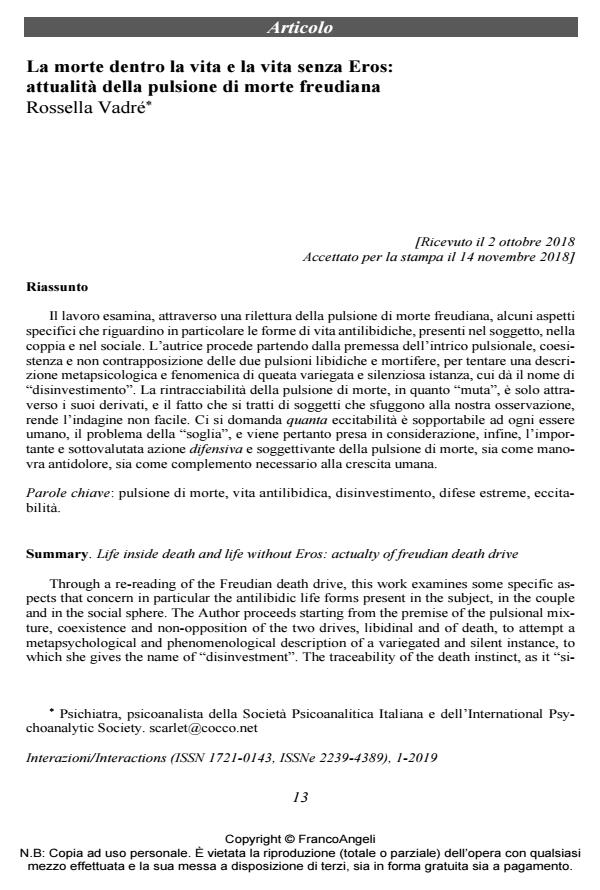Life inside death and life without Eros: actualty of freudian death drive
Journal title INTERAZIONI
Author/s Rossella Vadré
Publishing Year 2019 Issue 2019/1
Language Italian Pages 19 P. 13-31 File size 192 KB
DOI 10.3280/INT2019-001002
DOI is like a bar code for intellectual property: to have more infomation
click here
Below, you can see the article first page
If you want to buy this article in PDF format, you can do it, following the instructions to buy download credits

FrancoAngeli is member of Publishers International Linking Association, Inc (PILA), a not-for-profit association which run the CrossRef service enabling links to and from online scholarly content.
Through a re-reading of the Freudian death drive, this work examines some specific as-pects that concern in particular the antilibidic life forms present in the subject, in the couple and in the social sphere. The Author proceeds starting from the premise of the pulsional mixture, coexistence and non-opposition of the two drives, libidinal and of death, to attempt a metapsychological and phenomenological description of a variegated and silent instance, to which she gives the name of "disinvestment". The traceability of the death instinct, as it "silent", is only through its derivatives, and the fact that they are subjects that escape our observation, makes the investigation not easy. We wonder ourselves how much excitability is tolerable to every human being, the problem of the "threshold", and it is therefore taken into account, finally, the important and underestimating defensive and subjectively action of the death drive, both as a pain-free maneuver, and as a necessary complement to human growth.
Keywords: Death drive, antilibidic life, disinvestment, extreme defense, excitability.
Rossella Vadré, La morte dentro la vita e la vita senza Eros: attualità della pulsione di morte freudiana in "INTERAZIONI" 1/2019, pp 13-31, DOI: 10.3280/INT2019-001002